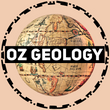Rushworth Goldfield Prospecting Map – Hunt for Gold in One of Victoria’s Great Alluvial and Reef Fields
Step back into one of Victoria’s most historically rich and consistently productive goldfields with the comprehensive Rushworth Goldfield prospecting map. Located between Nagambie and Waranga Basin, Rushworth became famous during the mid-19th century gold rush for its coarse alluvial gold, rich quartz reefs, and ancient deep leads—many of which remain highly prospective for today’s detectorists, panners, and serious gold hunters.
With gold found in creeks, gullies, ridges, and reef systems throughout the district, Rushworth remains one of Victoria’s premier areas for accessible, proven goldfields.
🪙 Historical Overview: Rushworth’s Golden Legacy
Gold was first discovered at Rushworth in 1853, quickly drawing thousands of diggers into the forests and gullies between Waranga Creek and Whroo. The district rapidly expanded to become a major center of alluvial and reef mining, peaking in the 1860s–1870s with significant finds in both shallow drifts and quartz reefs.
Nearby Whroo, part of the greater Rushworth goldfield, became famous for the Balaclava Reef, an extraordinary gold-bearing quartz system that fueled a mining boom lasting decades.
The field’s extensive deep lead systems, as well as widespread surface gold, meant that Rushworth remained active through several gold rush periods and is still frequently fossicked today.
✨ Notable Finds & Field Highlights
Numerous large nuggets were recovered in the 1850s–60s, some exceeding 50 ounces in weight
Rich quartz reefs at Whroo, Rushworth township, and surrounding ridges produced specimen gold and high-grade ore
Ancient deep leads yielded gold-bearing gravels, sometimes buried under layers of basalt, making them prime detector ground today
Surface alluvial gold was worked extensively in Heathcote Gully, Growlers Gully, Waranga Creek, and the flats around Rushworth
Whroo’s Balaclava Hill became a landmark of Victoria’s quartz reef mining era, with rich visible gold found in hand-crushed quartz
🥾 Ideal For:
Metal detectorists hunting for coarse nuggets on surface patches and shallow leads
Prospectors chasing reef gold specimens in historic quartz mining areas
Creek panners working ancient watercourses and floodplains
History lovers exploring ghost towns, mining relics, and forgotten gullies
⚠️ Access & Fossicking Information
Much of the Rushworth goldfield, including surrounding areas like Whroo Historic Reserve, lies within state forest and crown land, accessible to fossickers with a valid Victorian Miner’s Right. Some sections of the Whroo area are heritage-listed, so check fossicking regulations before working around historic mine sites. Numerous public tracks and creek crossings make this one of the most accessible high-gold-potential fields for recreational prospectors.
Strike Gold Where History and Adventure Meet – With the Rushworth Goldfield prospecting map, you’ll gain insider knowledge of one of Victoria’s most storied and rewarding goldfields. From alluvial nuggets in forgotten gullies to gold-quartz specimens from historic reefs, Rushworth still promises rich rewards for those willing to explore.
Link to the Rushworth goldfield map 1954:
https://viewer.slv.vic.gov.au/?entity=IE15494410&mode=browse
